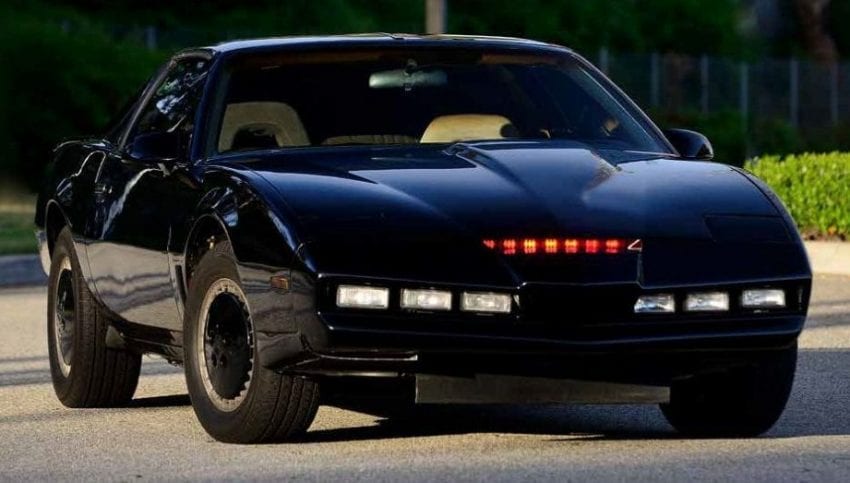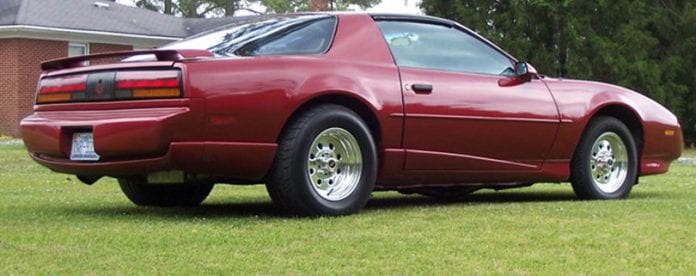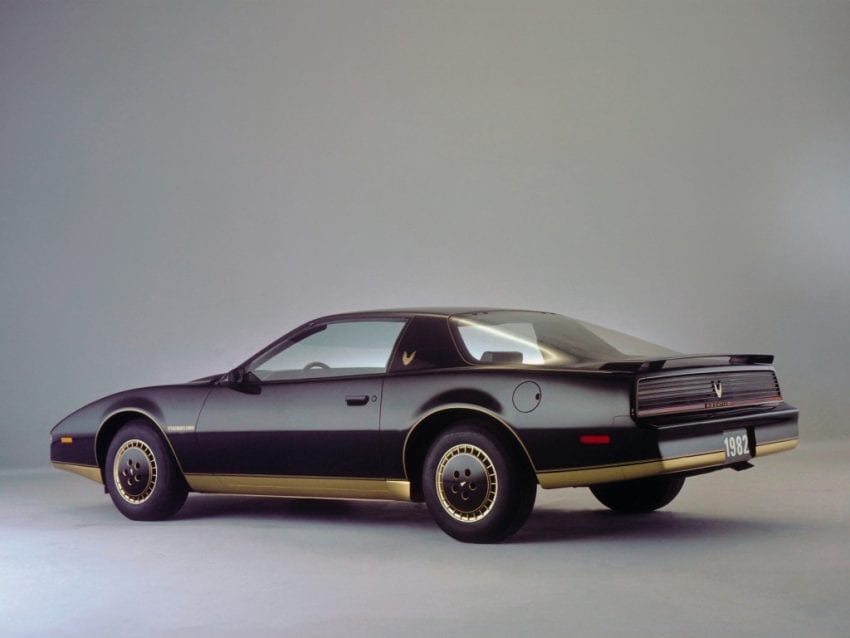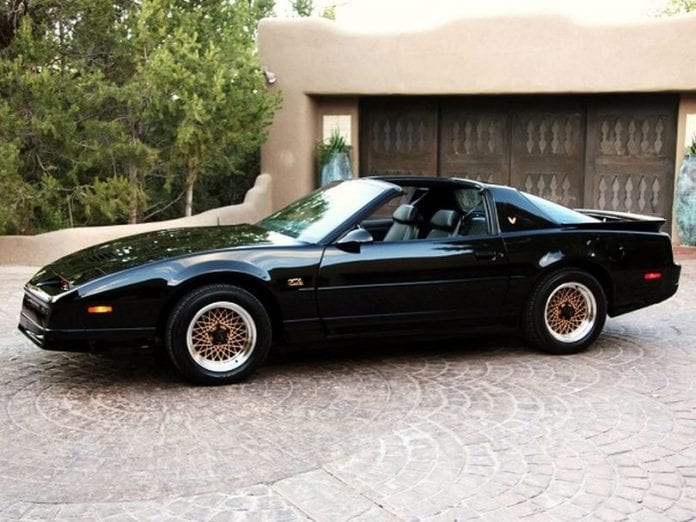During the 1980s, Pontiac, together with the other carmakers was led by legislation because, since the late 1960s, the US government passed series of laws regarding the vehicle emissions. The air in the US cities has become polluted, so something had to be done, and as the time has passed, the standards have become increasingly stringent. Because of these regulations, the manufacturers had to change the approach, so Pontiac and Chevy started planning the next-gen of the F-body in 1975, which was supposed to be a new vehicle.
They wanted to produce smaller and lighter car with good performance and improved mileage. Also, they were looking to add the latest tech available. In August 1977, Irvin “Irv” Rybicki replaced William Mitchell at the GM Design vice president position, and he wanted to see what the new model would look like.
“After looking them all over carefully, his comment, according to Palmer, was, ‘I think the basic theme looks good, but I feel very strongly that the F-car should have the single-panel side glass.’ In other words, no rear quarter window—a close-coupled, two-seat sports car sort of look—in keeping with the second-generation theme.”

At first, the third-gen Pontiac Firebird was supposed to be introduced in 1980, then in 1981 when it was postponed for 1982 and the crew based the new car on the 1976 rendering. After some time, the two vehicles – Pontiac and Camaro shared the roof panel, side glass, doors and rear hatch while they had different hoods, front fenders, and rear quarter panels. Furthermore, Pontiac had the new chassis and a shorter 101-inch wheelbase, while there were MacPherson struts at the front and coil springs at the rear.
Pontiac chief engineer, Bob Dorn said: “The new modified MacPherson-strut front suspension is solid-mounted to the body structures through a bolt-on crossmember, meaning its lateral compliance is near-zero—and you know what that means to handling. Instead of loading the system up with a lot of rubber for road isolation, we’ve accomplished the same thing through fine-tuning of the body members to maximize stiffness while minimizing deflections at each suspension attachment point.”
In other words, the suspension improved and so did the feel and the car behaved extraordinarily on the road. Plus, it shed 500 pounds compared to its predecessor. Schinella was quoted on Firebird! “The car is almost a perfect aerodynamic wedge, so it’s very sensitive to its attitude in the wind. Unfortunately, because of bumper-height and ride-travel requirements, we can’t sell it that way.”
Also read: Pontiac Trans Ams Story In Smokey And The Bandit Movie
The third-generation Pontiac Firebird was introduced, and it was shorter than its predecessor. If you flipped the rear seat back down, you would get a massive 30.9-cubic-foot cargo area, but the manufacturers had problems with the curvature of the rear window which was really difficult to produce. They managed to fix the issue quickly, though. Meanwhile, the company took a different tack with the Special Edition, according to John Schinella.
“We wanted this car to be a little more sedate, more sophisticated, a nice, clean, Porsche-type image that a buyer could relate to without all the goodies on the T/A. What we did was come up with a tone-on-tone concept, color-on-color, sort of like a guy in a gray suit with a light gray shirt and gray tie—tasteful, elegant. If you take the gold car, for example, the upper surfaces are light gold, the lower surfaces dark gold, and the turbo wheel covers match the upper body. When you get the rear wing it’s also body color. The mirrors are gold, and so are the door handles. The S/E lettering is gold-on-gold. The grilles almost made it in body color, too, which would have been neat but the material they’re made from can only be done in black, and it was too late to change the material.”

He added: “The Trans Am, on the other hand, was taken to the other extreme. Instead of all the appendages of the past, this car has its aerodynamics built in. It’s very smooth, to begin with, so we couldn’t shout about that. Instead, we took a more mechanical approach. A lot of prototype work has this high-tech sort of look, with matte black finish. It registers “high-tech” and it looks structural. The taillight bird insignia is a matte gray, but so are all the devices or appendages or pieces that identify the Trans Am so you’ll recognize that they’re there for a reason. These include the turbo wheel covers, the dual mirrors, the wing, the door handles, the grilles, the functional air exhaust just rearward of the front wheel, the lettering, the graphics, and the accent along the bottom of the car. The colors are bright, high-“chroma,” high-intensity in contrast to the S/E’s more sophisticated colors.”
With the new Firebird versions, new engines were introduced, and a four-cylinder was used in the F-body for the first time. The 2.5-liter fuel-injected powerplant produced 90 hp and 134 lb-ft of torque, and it was a standard unit. During that times, Pontiac invested a lot of money in a 5.0-liter V8 engine and a small I4 unit, with which the vehicle took about 20 seconds to reach 60 mph. However, everyone wanted to be seen in the new Firebird, which had a sleek design at the time and it didn’t cost a lot of money.
The first optional unit was a 2.8-liter V6 that delivered 105 hp and 142 lb-ft of torque, and it came from Chevrolet. The other version was used for the Special Edition – also Chevrolet-sourced, a 5.0-liter V8 good for 145 hp and 240 lb-ft of torque. This unit was decently powerful, and when it was installed in a Trans Am with the automatic transmission, it would help the car reach 60 mph in 10.8 seconds.
The interior was also special, and it matched the exterior. In 1977, a concept studio was created and led by John Shettler, a purpose of which was to find themes for the interior in the third-gen F-body. The philosophy was to create a high-tech design, and some of the inspiration sources were the Concorde supersonic transport and Lear business jet airplanes, and their instrument panels were modified for the Pontiac. The aircraft theme was everywhere, and both real and fake Torx fasteners were used. The vehicle contained Recaro seats with Parella cloth, T-tops and the WS6 suspension and the word “Recaro” was installed on the exterior door handles.

Designing and making the third-gen Pontiac Firebird was a long process, but the cars were eventually sent to the studio where the production staff began to modify them so that they could fit Schinella’s drawings. Schinella was supervising the entire process. The 1982 Pontiac Firebird was created, and it became an iconic vehicle.









